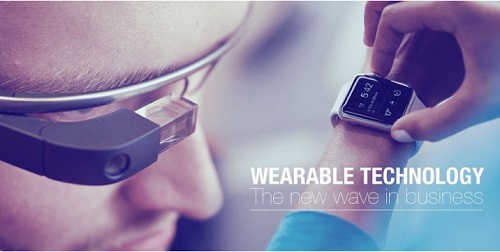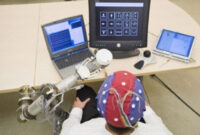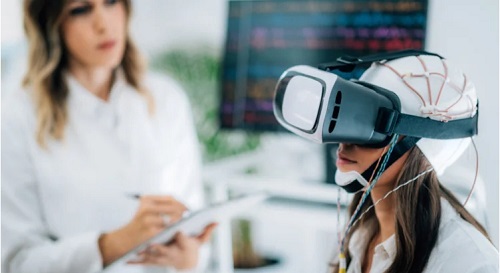Wearable technology, which is currently led by smartwatches, represents a multi-billion dollar market focused primarily on health monitoring.
Numerous high-end products assert that they can accurately measure exercise patterns, body temperature, heart rate, menstrual cycles, and sleep quality, among other metrics.
Health Secretary Wes Streeting has discussed a plan to provide wearables to millions of NHS patients across England, allowing them to monitor symptoms related to cancer treatments from their homes.
However, many healthcare professionals and technology specialists are wary of relying on health data gathered from wearables.
I am presently testing a smart ring from Ultrahuman, and it seemed to detect my illness before I was even aware.
One weekend, it notified me that my temperature was slightly elevated and that my sleep had been disturbed. It cautioned me that this could indicate I was falling ill.
I brushed off the warning, attributing it to perimenopause symptoms, but two days later, I found myself stuck in bed with gastric flu.
While I didn’t need medical help, I wonder if the information from my wearable could have aided healthcare providers in my treatment. Many wearable companies actively promote this idea.
For instance, the Oura smart ring provides a feature that allows patients to download their data as a report to share with their healthcare providers.
Dr. Jake Deutsch, a clinician in the US who also consults for Oura, states that wearable data allows him to evaluate overall health more accurately. However, not all doctors believe this is consistently beneficial.
Dr. Helen Salisbury, a general practitioner at a busy Oxford clinic, mentions that few patients initially arrive with their wearables, but she’s observed an increase in this trend, which concerns her.
She feels that while there are times it’s beneficial, there are likely more instances where it’s not particularly useful, and she fears we’re fostering a culture of hypochondria and excessive monitoring.
Dr. Salisbury points out that there are numerous reasons for temporarily abnormal readings, such as a sudden increase in heart rate, whether due to a normal bodily fluctuation or a problem with the device—many of which don’t need further probing.
She worries that we may prompt individuals to continually monitor their health and consult their doctors every time a device indicates an issue, rather than waiting until they personally feel unwell.
Additionally, she raises a concern regarding the psychological impact of this data acting as a safety net against alarming health diagnoses. For example, a serious cancerous tumor may not necessarily be detected by a wearable device or an app, she explains.
What these devices do is promote healthy behaviors, but the most valuable takeaway from them is the same advice doctors have provided for years. Dr. Salisbury adds, “The fundamental actions are to increase walking, limit alcohol consumption, and strive to keep a healthy weight. That advice remains unchanged.”
The Apple Watch is often cited as the world’s top-selling smartwatch, although its sales have experienced a recent slowdown.
Apple has not made a statement, but the tech company utilizes real-life stories of individuals whose lives were saved due to the heart monitoring feature of the device in its marketing. Anecdotally, I’ve heard many of those narratives as well. However, I haven’t encountered reports regarding the frequency of false positives.
When patients share their data with healthcare professionals, many clinicians prefer to try to replicate those readings using their own equipment rather than automatically trusting the information provided by the wearable.
There are several practical reasons for this preference, according to Dr. Yang Wei, an associate professor in wearable technologies at Nottingham Trent University.
“When you’re in a hospital setting and measuring an ECG [electrocardiogram, which checks heart activity], you don’t have to worry about battery life since the machine is plugged into an electrical outlet,” he suggests.
“Conversely, with your watch, you can’t continuously record your ECG without quickly draining the battery.”
Moreover, the movement of both the wearable device on a wrist and the wearer’s overall activity can introduce “noise” into the data it collects, making it less trustworthy.
Dr. Wei refers to the ring on my finger.
“The most accurate way to measure heart rate is from the wrist or directly from the heart,” he states. “Measuring from the finger compromises precision.”
It’s the responsibility of software to address such gaps in data, he asserts, but there is currently no global standard for wearables regarding the sensors and software that underpin these devices, or the data itself, including how it’s collected.
The accuracy of data is likely to improve with the consistent use of a device. However, there is a cautionary anecdote to consider.
Ben Wood was spending the day out when his wife began receiving a series of concerning alerts from his Apple Watch, indicating he had been involved in a car accident. It suggested that she text him instead of calling, as he might need to keep the line available for emergency services.
The notifications were legitimate and sent to her as his emergency contact, but in this instance, they were unnecessary. Ben was at a racetrack driving high-speed cars. He admitted he “wasn’t very gifted” at it but insisted he felt safe throughout.
“The distinction between an incident and an alert should be handled carefully,” he noted in a blog post. “I’m interested to see how device manufacturers, emergency services, first responders, and individuals will approach this technology moving forward.”
Pritesh Mistry, a digital technologies fellow at the Kings Fund, acknowledges that significant challenges exist regarding the integration of patient-generated data into healthcare systems. He adds that this discussion has been ongoing in the UK for several years without any clear resolution.
He believes there’s “a compelling argument” for the incorporation of wearables in the UK government’s current initiative to transition care from hospitals to community settings.
“However, without a robust technological infrastructure and adequate workforce training in terms of skills, knowledge, capacity, and confidence, I think it will be a challenge,” he argues.
With the evolution of consumer technology, there has been a marked increase in the utilization of personal devices for various healthcare-related functions. From smartphones and tablets to fitness trackers and smartwatches, more patients are using their personal devices to monitor health metrics, access medical information, and communicate with healthcare providers.
The Bring Your Own Device (BYOD) trend involves people using their personal devices for work and medical purposes, thereby integrating personal technology into healthcare workflows. While the adoption of BYOD offers a range of advantages, it also introduces risks, especially in terms of data security, privacy, reliability, and accuracy.
As patients become increasingly reliant on personal devices in healthcare contexts, professionals must recognize the associated risks and advocate for the use of certified medical devices. Ensuring that medical-grade devices comply with standards for data security, accuracy, and regulatory requirements is crucial for delivering effective healthcare and safeguarding patient information.
Consumer-grade wearables, such as fitness trackers, smartwatches, and heart rate monitors, have gained substantial popularity in recent years, allowing users to monitor health metrics and pursue fitness goals. Smartwatches represent a significant segment of the expanding global wearables market. According to the Pew Research Center, almost one in five U.S. adults (21%) report regularly wearing a smartwatch or fitness tracker. Looking forward, the trend in smartwatches is anticipated to grow further. Statista forecasts that global smartwatch shipments will surge from 37 million units in 2016 to over 402 million units by 2027.
Although these devices provide valuable insights into a patient’s everyday activity levels and overall health, it’s essential to recognize the difference between consumer-grade and medical-grade wearables. Medical-grade wearables are specifically designed for clinical use, undergoing rigorous testing and certification to guarantee accuracy, reliability, and adherence to regulatory standards. They are often utilized under the guidance of healthcare professionals.
Medical-grade wearable devices are becoming increasingly vital in contemporary healthcare. They monitor numerous vital signs and parameters, such as heart rate, skin temperature, heart rate variability, and respiratory rate. Devices that offer continuous monitoring improve data accuracy and reliability by gathering patient information over time and in various conditions.
By acknowledging the dangers of relying solely on personal devices and stressing the importance of certified medical technology, healthcare providers can protect patient data integrity, maintain compliance with regulations, and deliver high-quality care. Educating patients about the advantages of medical-grade wearables and the possible downsides of using personal devices can further enhance the effectiveness and safety of remote patient monitoring.
Examining the Risks and Considerations of BYOD
In a recent study, researchers investigated the challenges faced by hospitals concerning BYOD policies. They identified concerns about inadequate device security, staff awareness, and usage guidelines. The results indicated that hospitals must educate staff, create clear policies, and implement appropriate technological solutions to effectively manage implementation challenges and adapt to the changing risks associated with BYOD.
With the increasing prevalence of wearable technology and personal devices in the healthcare sector, it is crucial for both healthcare providers and patients to prioritize the use of medical-grade wearables for health-related purposes. Utilizing personal fitness trackers or smartwatches for medical applications poses specific difficulties.
Precision and trustworthiness: Medical-grade wearables undergo extensive testing and certification to ensure they provide accurate and reliable measurements in clinical environments. In contrast, personal fitness trackers might not adhere to the necessary standards for medical usage, resulting in possible inaccuracies in health monitoring data. For instance, a temperature sensor on a smartwatch may deliver unreliable readings due to its placement on the body and exposure to surrounding temperatures.
Protection of data: Personal fitness trackers often lack sufficient security measures to safeguard sensitive medical information. Consequently, the risk of data breaches or unauthorized access increases when utilizing these devices for health-related applications, which could jeopardize patient confidentiality. Many consumer-grade trackers automatically transmit data to the vendor’s cloud storage, which might not comply with HIPAA requirements.
Adherence to regulations: Medical wearables must comply with regulatory standards designed to ensure their safety and effectiveness for health applications. In the U.S., for example, medical devices undergo evaluation by the Food and Drug Administration (FDA) prior to receiving authorization for patient use. These devices are categorized based on risk, from Class I to Class III.
Personal fitness trackers may fail to satisfy these regulatory requirements, limiting their appropriateness for clinical use. To gain FDA clearance, medical devices must also be clinically validated to confirm their effectiveness in monitoring particular health conditions and outcomes. Conversely, personal fitness trackers may not possess clinical validation evidence, complicating the assessment of their accuracy and reliability for medical monitoring.
Compatibility and integration: Wearables are typically crafted to work seamlessly with healthcare systems and electronic health records (EHR) platforms, facilitating smooth data sharing and interoperability. Personal fitness trackers might lack integration features, making it difficult to incorporate their data into established healthcare processes and systems.
Although personal fitness trackers provide ease of use and access for general health and wellness monitoring, they may not be appropriate for medical use. Providers should be cautious when evaluating personal fitness trackers for medical oversight and should emphasize the use of medical-grade wearables that comply with established safety, effectiveness, and data security standards.
It might appear that wearable technology and personal lifestyle applications have existed for an extended period, but their popularity has only recently surged. Smartwatches, fitness trackers, smart jewelry, gaming simulators, and various health monitoring devices have become everyday necessities for many users, regardless of their technical expertise.
Wearable technology seeks to efficiently integrate data and metrics to enhance our health and well-being. This trend’s growth has led millions to enthusiastically discuss improvements in cardiovascular fitness and weight loss, among other benefits. Brands such as Fitbit, Apple Watch, and Google Glass have become synonymous with products designed to improve the lifestyles of their users.
The global market for wearable technology is projected to experience a compound annual growth rate (CAGR) of approximately 17.6% from 2022 to 2027. Currently valued at around $186.48 billion, it is expected to reach $493.26 billion by 2029. This indicates that the market is ripe for further opportunities, especially as sustainability becomes a focal point for many industries; we can expect an even greater blending of fashion and technology in the near future.
However, while wearable devices offer numerous benefits and deserve recognition for their positive contributions, there are important considerations to keep in mind. This article examines the primary advantages and disadvantages of adopting wearable technology and outlines how to implement it thoughtfully for appropriate reasons.
Sustainability: Smart glasses, watches, and other wearable items are emerging as innovative trends that meet both lifestyle enhancement and environmental goals. Many of these products are made from eco-friendly and biodegradable materials, and given their expected lifespan, they are less likely to contribute to electronic waste once they are no longer useful.
Sustainable smart wearables—similar to immersive sports simulation systems and virtual reality technology—often incorporate energy-efficient features and biometric sensors that assist users in minimizing energy use and making informed decisions about their lifestyle and exercise choices.
That being said, there are certainly initial expenses linked to their broad adoption, which means those with limited budgets may find it harder to obtain one. The prices can vary from hundreds to thousands of dollars, influenced by the brand and features. While many may perceive this cost as an investment in their health and future instead of a mere expense, it could exceed the budgets of several potential users right from the start.
Wearable devices can effectively and independently track metrics such as steps, calories burned, heart rate, sleep patterns, and other crucial aspects of our daily health. This data enables us to make informed decisions about when to exercise or rest, ultimately empowering users to better understand their health. Numerous wearables come equipped with additional built-in functionalities like mindfulness and meditation, some of which may only be available to users with premium subscriptions.
Concerns have been voiced regarding the precision of the health data gathered by wearable devices. Inaccurate or misleading information could deceive users about their fitness levels, significantly affecting both their mental and physical well-being. Issues of data privacy and security are also significant, especially if fitness trackers collect personal or location data that may be shared with outside parties.
Wearable technology is enhancing accessibility to vital functions for various individuals, such as assistance for those with hearing impairments, glucose monitoring for diabetics, or fall detection systems for older adults, to name a few. These examples illustrate the benefits of wearables in helping those with additional needs. Furthermore, wearables facilitate easier access to crucial treatments for patients and allow doctors to monitor their patients remotely, enabling them to take a more proactive role in their health management.
One concern in this area is that wearable technology can be susceptible to hacking and exploitation, putting vulnerable populations at risk. Whether users lack the necessary technical skills to safeguard personal information or have physical challenges that complicate the detection of threats, their privacy needs to be protected.
Employers are promoting the widespread adoption of fitness technology, including wearables, to encourage healthy behaviors within their workforce. Gamification strategies that reward employees for achieving activity milestones have demonstrated high levels of engagement. This, in turn, fosters positive lifestyle changes and cultivates a stronger sense of community among teams, significantly enhancing overall workplace enthusiasm, engagement, and morale.
Nonetheless, mandatory workplace wellness programs might intrude excessively on an employee’s personal or work time. Some employees may be uncomfortable sharing health information with anyone outside their HR department. Therefore, if you plan to implement a workplace wellness program, it’s essential to obtain full support from employees and take their preferences or concerns into account when designing it.
Many individuals purchase wearable technology to boost productivity and efficiency in both their personal and professional lives. Wearable devices assist in achieving this goal by keeping users connected throughout their daily activities. In an age of instant access, wearable technology enables users to obtain information and data without the constant need for phones or laptops, which can be viewed as poor manners in workplace settings.
Given this, wearable technology can also be seen as potentially distracting, particularly for devices that access the internet and send real-time notifications. Constant pings and alerts throughout the day can replicate those from a smartphone, compelling users to carefully manage their usage to avoid becoming overly dependent on the devices. Practicing mindfulness is crucial.
By weighing the advantages and disadvantages—with a focus on the people—it’s possible to utilize wearables as a beneficial force for employees and customers alike.
Here are some suggestions for fostering better relationships with wearable technology, which many people tend to overlook:
– Set appropriate daily usage limits.
– Determine how a device may provide essential assistance for disabilities.
– Establish clear goals linked to habits and lifestyle; if they prove too ambitious, modify them.
– Use them discreetly during professional engagements.
– Plan your budget—some high-end models may offer features beyond what some users actually require.
With a considerate and principled approach, wearable technology can significantly contribute to healthier and more knowledgeable lifestyles. However, attention to issues of privacy, accuracy, and the risk of overdependence still needs continuous assessment.



